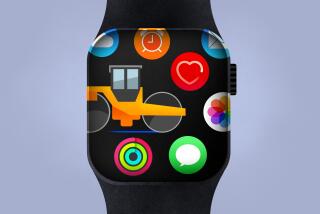As the Macintosh Turns 15, Its Designers Note Its Influence
- Share via
SAN FRANCISCO — The Macintosh, Apple Computer’s innovative machine that became the progenitor of more friendly, accessible computing, turned 15 on Sunday. But its creator was too busy managing its success of the moment to pause for nostalgia and stage an anniversary celebration.
The Mac’s anniversary comes at an auspicious moment for the company, which has lately defied rampant predictions of its imminent demise and has surged into renewed popularity with its latest creation--the iMac--and solid profitability under interim Chief Executive Steve Jobs.
The iMac, great-grandchild of the original Mac, conveys for many the excitement, if not the leap of innovation, embodied in the computer that made 1984 a year that techno-historians view as a crucial turning point in personal computing.
Members of the original Macintosh development team were happy to reflect on the heady period in which they fully expected to radically change computing.
Graphical icons, on-screen windows, pull-down menus and the mouse pointing device were invented elsewhere, but Apple single-handedly popularized them. The Mac became the first PC that was both fun and functional, an inspiration for creative imaginations.
The Mac’s fundamental contribution was being “the first popular computer designed as an embodiment of an interface,” said Jef Raskin, the product’s first manager and originator of the name “Macintosh.”
“To any user, the interface is the computer now,” he said. “You can advertise ‘Intel inside’ all you want, but users don’t care if it’s mice running on little treadmills instead.”
Apple also meant to smash the PC’s straight-arrow, Big Blue status quo, as vividly symbolized in the famous TV spot during the 1984 Super Bowl that presaged the Mac’s introduction.
The commercial depicted mesmerized, slave-like drones facing an Orwellian ruler on a large video screen. A vibrant female athlete shatters the image by hurling a sledgehammer at the monstrous face. As the screen explodes, the voice-over declares: “On Jan. 24th, Apple Computer will announce Macintosh. And you’ll see why 1984 won’t be like ‘1984.’ ”
Just as the Mac reshaped computing, it changed its makers.
Raskin left Apple in 1982 after Jobs wrested control of the Mac project from him. But the experience led him to dedicate his career to ever-easier computing, working as an interface design consultant.
Another member of the original Mac team, Bill Atkinson, left and in 1990 founded General Magic Inc., which creates “intelligent agents”--software to improve network communications. For Apple, Atkinson had invented QuickDraw, the Mac’s method of presenting on-screen images; MacPaint, the original PC painting program; and HyperCard, a simple programming tool that combined hypertext linking, animation, scripting and page layout.
Atkinson has since quit software design altogether to become a full-time nature photographer, using the Mac as his darkroom.
“The Mac is turning out to be the most wonderful payback for me. I spent about 20 years making tools to empower creative people; now I’m being empowered,” Atkinson said.
Such views mirror those shared by many on the original Mac team who subscribed to the populist message of the 1984 commercial. They designed the Mac to cost only $1,000 and felt betrayed when Apple priced it at $2,495 ($3,917 in 1998 dollars).
It took another 13 years before the $1,000 PC was available to consumers, though Apple has yet to ship so inexpensive an offering (except to unload obsolete inventory).
Might Apple again provoke a transformation in computing?
Atkinson and Raskin applaud the iMac and credit Apple with such innovations as “Firewire”--a fast connection scheme for peripheral devices. But they doubt Apple will equal its old glories.
Raskin rejects the model for most of today’s complex, monolithic software programs--”each application as its own city.” He advocates scrapping the desktop metaphor pioneered by the Mac and creating computers with the intuitive ease of a TV or toaster oven.
To Atkinson, the focus of computing has already shifted irrevocably from the computer to the network.
“The World Wide Web is the most important single outcome of the personal computer. It is the Gutenberg press that is democratizing information,” he said.
“If Apple had been a little more network-centric instead of box-centric, they would have had the first browser instead of Netscape,” Atkinson lamented. After all, he argues, HyperCard offered the key elements of a browser a decade before the Web arrived.
“There will not be the same kind of dramatic shift [like] from a text-based to a graphical-based computer,” Atkinson said. “But you don’t want the shift for the shift’s sake. The goal is to make it better for human beings.”
Staff writer Charles Piller can be reached via e-mail at charles.piller@latimes.com.






